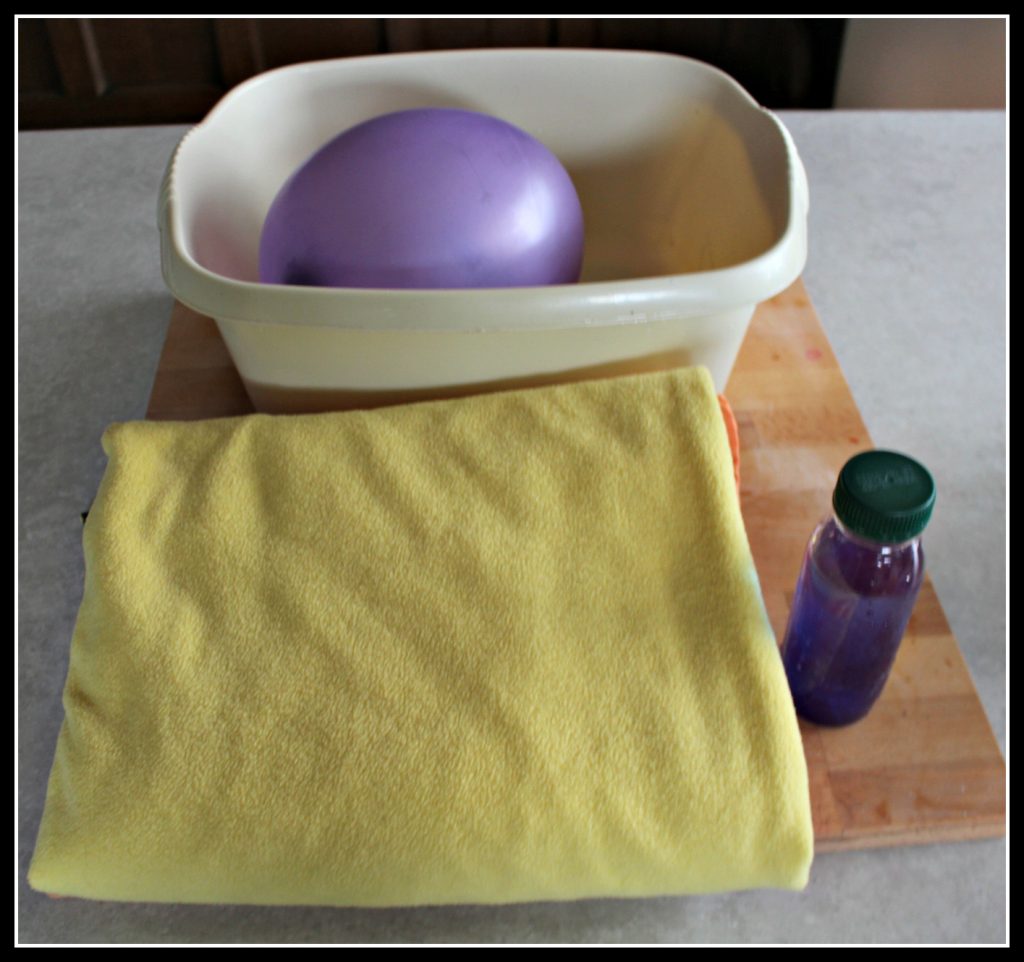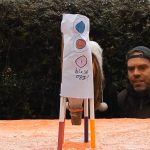The kids and I have been busy conducting science experiments again. On this occasion, Helen, Izzy and I carried out the ‘electromagnetic balloon’ experiment. What you do is charge up a balloon with static electricity and then use it like a magnet to change the flow of running water.

You’ve no doubt seen what happens when you rub a balloon on your clothes and then hold it near someone’s hair. Until we saw it, Helen, Izzy and I didn’t believe the charge would be strong enough to attract flowing water. To our amazement, the electrical charge is strong enough and you can easily replicate the experiment at home.
We made a video of our efforts. You can watch it by clicking on the link below. This is the fourth in our series of House of Experiments films. These are simple science experiments you can do at home with your children and we will be adding further videos in the weeks to come. If, however, you’d prefer written instructions, keep on reading.
You will need:
- A balloon
- Something to rub the balloon on made of man-made fibres such as a blanket or jumper
- A plastic bottle with a small hole in the bottom
- Water (in the picture below we have dyed the water with food colouring but you don’t need to do this)
- A washing up bowl or bucket to catch the water.

What you do:
- Fill the bottle with water, put the lid on and leave it upside down for a moment so it doesn’t leak
- Charge the balloon by rubbing it on the blanket / jumper
- Once the balloon is charged up, hold the bottle the correct way up over the washing up bowl so the water starts pouring out of the hole in the bottom (you may have to undo the lid to get the water flowing)
- Slowly bring the charged-up balloon towards the flowing water.
You will see the water bends towards the balloon. The image below is a still from the video we recorded. It’s not the clearest picture in the world, but if you look bang in the centre, you will see the flow of water is bending towards the balloon.

How it works
Like most things, water has a mix of positive and negative electrons. These electrons are all mixed up in the water.
When you rub the balloon, you charge it up with positive electrons. If you hold the balloon near the water, the positive electrons in the water are attracted to it and this pulls the water towards the balloon.
That said, the charge provided by the balloon is not strong enough to overcome the force of gravity. The water may change direction and move towards the balloon, but it will continue to fall to the ground.
An excellent explanation of this experiment can be found by following this link.
Other experiments
As I said at the beginning, we’ve made several other YouTube videos of our science exploits. At the suggestion of Helen, my seven year old, we’ve called the playlist the House of Experiments and you can watch them all here.
I was inspired to make this series of videos having tried to replicate numerous other kid-friendly science experiments that I’d seen online. More often than not, they were far too difficult to repeat at home. Frustrated at this, Helen, Izzy and I are making our videos and you can rest assured that each and every one of them has been carried by us and that it works.
We have many more videos and experiments in the pipeline. If there’s one in particular you’d like us to try out, please leave a comment below.







8 thoughts on “Electromagnetic balloon: science experiments for kids No 4”
My husband needs to see this as he loves his physics and he is determined to get our daughter into computers (well at least understand it!). Great idea and does remind me of school. Always good for us to get a refresher too! xx #coolmumclub
Well Sarah, I suggest you come back to my YouTube channel in a week or two. I have some further physics experiments in the pipeline as it happens. I’m looking to filming them and writing about them.
Oooh I love this John I am definitely going to try this one out with my little….and snuffle out the others. Thanks for linking up to #coolmumclub with this!
Enjoy! She may like the video I have planned for next week.
As an actual scientist, I’m all over this John! Although my field is Biology, I sucked pretty bad at Physics and Chemistry …But there’s still time to nail it 😉
Thanks for coming back to #coolmumclub!
This raises an interesting point. I haven’t tried any biology experiments yet (does the yeast balloon experiment count?). I may have to seek some out.
We are big science fans here. We did this with a running tap, but some coloured water would have made it even easier to see. #coolmumclub
I have heard of this being done with a running tap, but what size balloon did you use? I would have thought the stream of water would have been too quick.